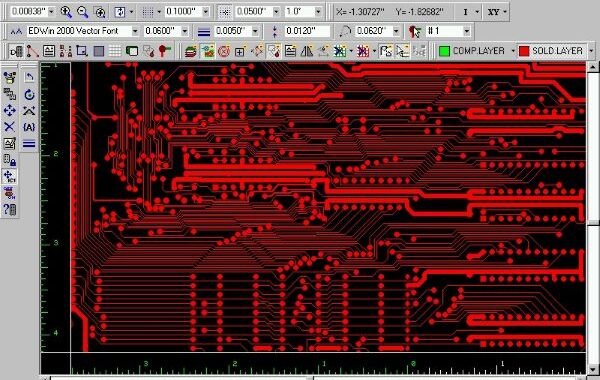Welcome to our page dedicated to NI Multisim Video Tutorials. Here, you will find a collection of YouTube videos that offer a comprehensive overview of the capabilities of NI Multisim software for SPICE simulation and PCB design. These videos cover a wide range of topics, from the fundamental aspects of placing components on the layout to conducting time-domain analysis using the virtual oscilloscope. You’ll also learn how to perform AC analysis, utilize tools for phasor analysis, explore the integration of LabVIEW with NI Multisim, create schematics for new programmable logic designs, and harness Ultiboard for your PCB layout needs. Whether you’re a novice seeking an introduction to the software or an experienced user looking to enhance your skills, these tutorials will guide you through the various functionalities and empower you to make the most of NI Multisim’s features.
Alternativa:
Welcome to our page dedicated to NI Multisim Video Tutorials. If you’re eager to delve into the world of circuit design, SPICE simulation, and PCB layout using NI Multisim software, you’re in the right place. We’ve curated a collection of informative YouTube videos that will equip you with the knowledge and skills needed to harness the full potential of NI Multisim.
Exploring NI Multisim’s Capabilities: A Deep Dive
These NI Multisim video tutorials cover a wide spectrum of topics, catering to both beginners and advanced users. If you’re just starting, you’ll find videos that walk you through the basics, such as how to strategically place components on the layout canvas and connect them effectively. But we don’t stop there – we’ll take you on a journey through more complex tasks too.
Mastering Analysis Techniques
In these tutorials, you’ll learn how to perform essential analysis techniques. From time-domain analysis, using the built-in virtual oscilloscope, to AC analysis and phasor analysis tools, we’ll guide you step by step. No matter your level of familiarity with these concepts, our tutorials will ensure you grasp them with ease.
Integration and Innovation
NI Multisim isn’t just a standalone tool; it’s a versatile software that can integrate seamlessly with LabVIEW for enhanced capabilities. Our tutorials will demonstrate how to bridge the gap between these two powerful tools, opening up new possibilities for your projects. Additionally, if you’re interested in programmable logic designs, Videos will show you how to create detailed schematics tailored to your needs.
From Schematic to PCB Layout
Taking your circuit design from a schematic to a physical PCB layout is a crucial step. Our tutorials go beyond theory and guide you through the utilization of Ultiboard – NI Multisim’s companion for designing professional-grade PCB layouts. You’ll gain insights into optimizing component placement, routing traces efficiently, and ensuring your design is production-ready.
For All Skill Levels
Whether you’re a newcomer seeking a friendly introduction or a seasoned user aiming to further refine your skills, these NI Multisim Video tutorials cater to your needs. We ensure that the learning curve is smooth and the content is engaging, making your exploration of NI Multisim not only educational but also enjoyable.
In conclusion, our NI Multisim Video Tutorials are designed to empower you with the expertise needed to leverage the software’s capabilities fully. With step-by-step guidance, insightful demonstrations, and a wealth of practical tips, you’ll be well-equipped to create intricate circuits, simulate their behavior, and design professional-grade PCB layouts. Your journey into the world of circuit design starts here, so dive in and discover the endless possibilities with NI Multisim.
For a step-by-step guide on how to draw and simulate your first circuit using NI Multisim, you can refer to this article.
Learn how to create, design, and analyze circuits using NI Multisim!!


| Topic | Video |
| How to place and wire components with NI Multisim | |
| NI Multisim and Time domain analysis, the oscilloscope | |
| The AC Analysis with NI Multisim | |
| Analog Simulation Feature Enhancements | |
| NI Multisim: the Grapher View | |
| Phasors with NI Multisim | |
| Create a component from a template with NI Multisim | |
| NI Multisim: Using the SPICE Netlist Viewer | |
| How to Import a SPICE list into NI Multisim | |
| How to use LabVIEW Instruments with NI Multisim | |
| New Programmable Logic Design Schematic | |
| NI Multisim: Using global and pages connectors | |
| PCB Design with Multisim: Ultiboard | |
| Rearchitected Forward and Backward Annotation | |
Master PCB Design using Ultiboard and Multisim!!














